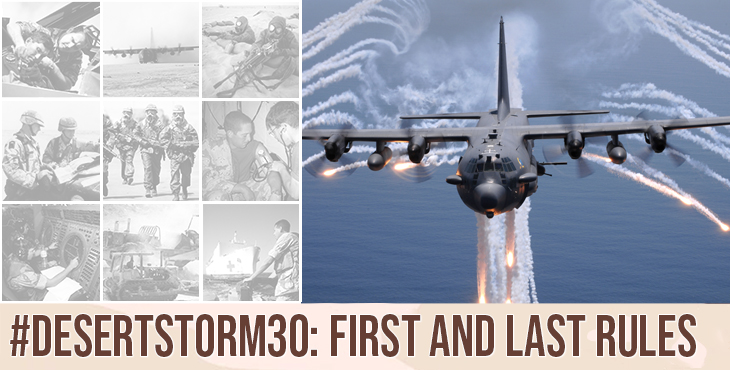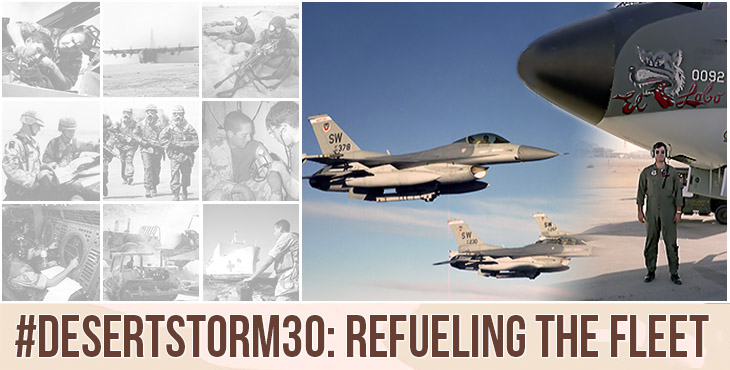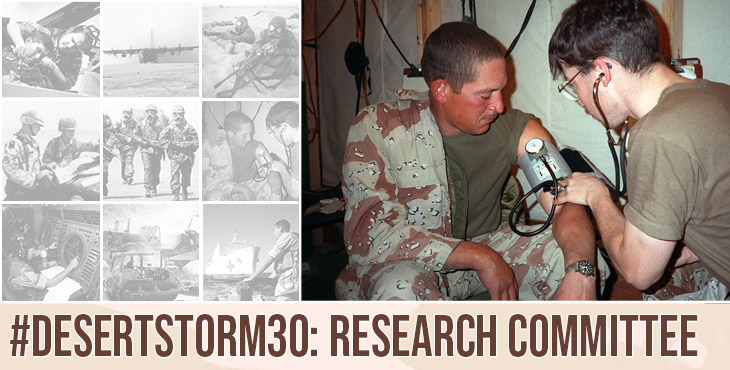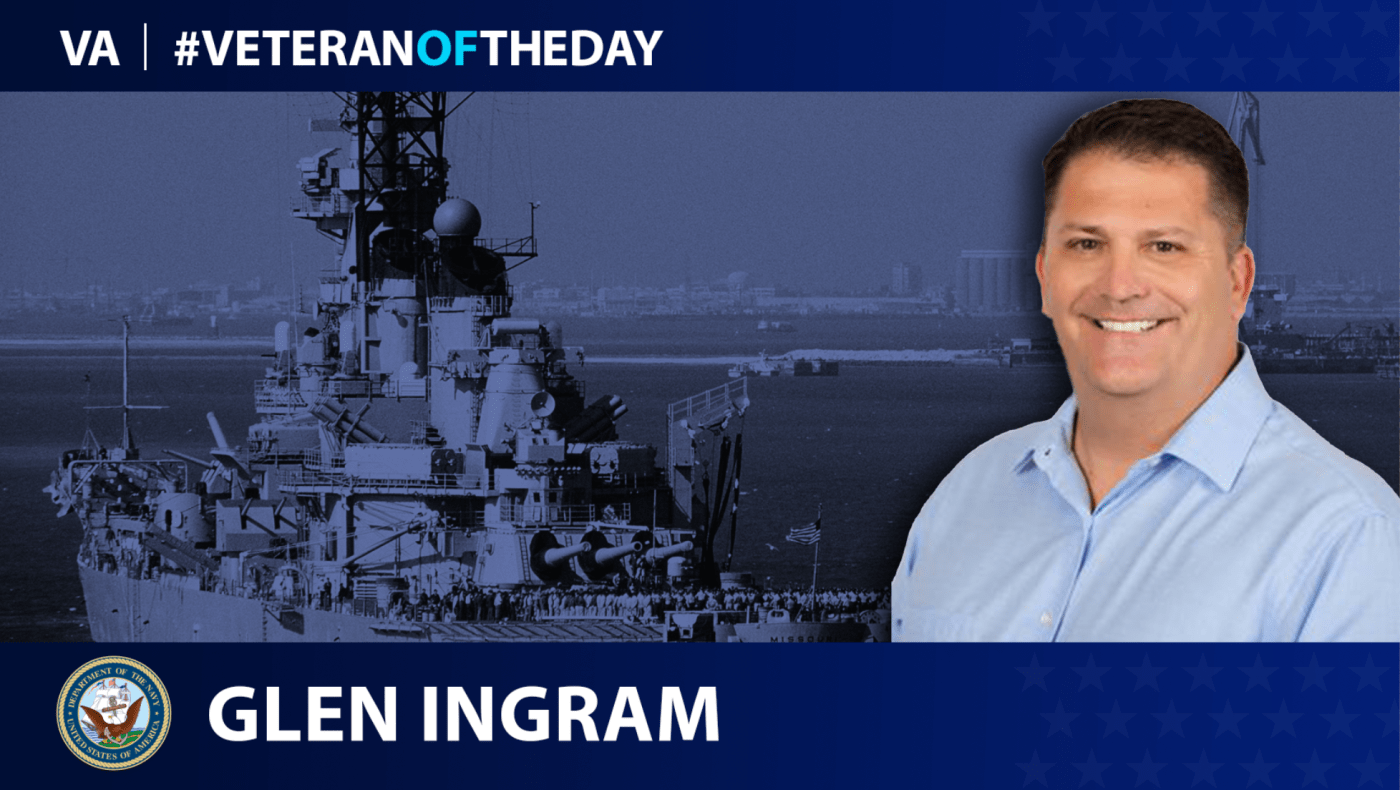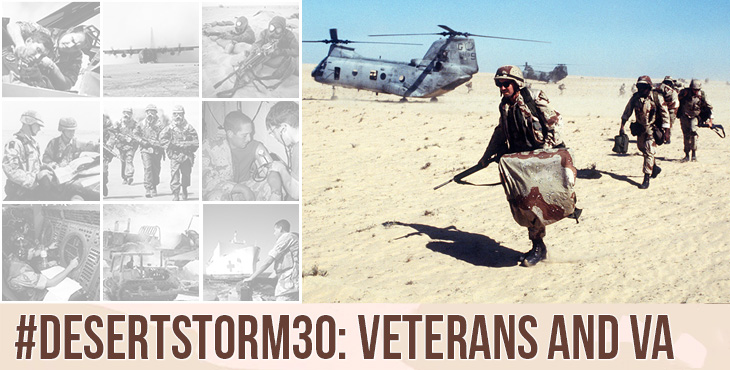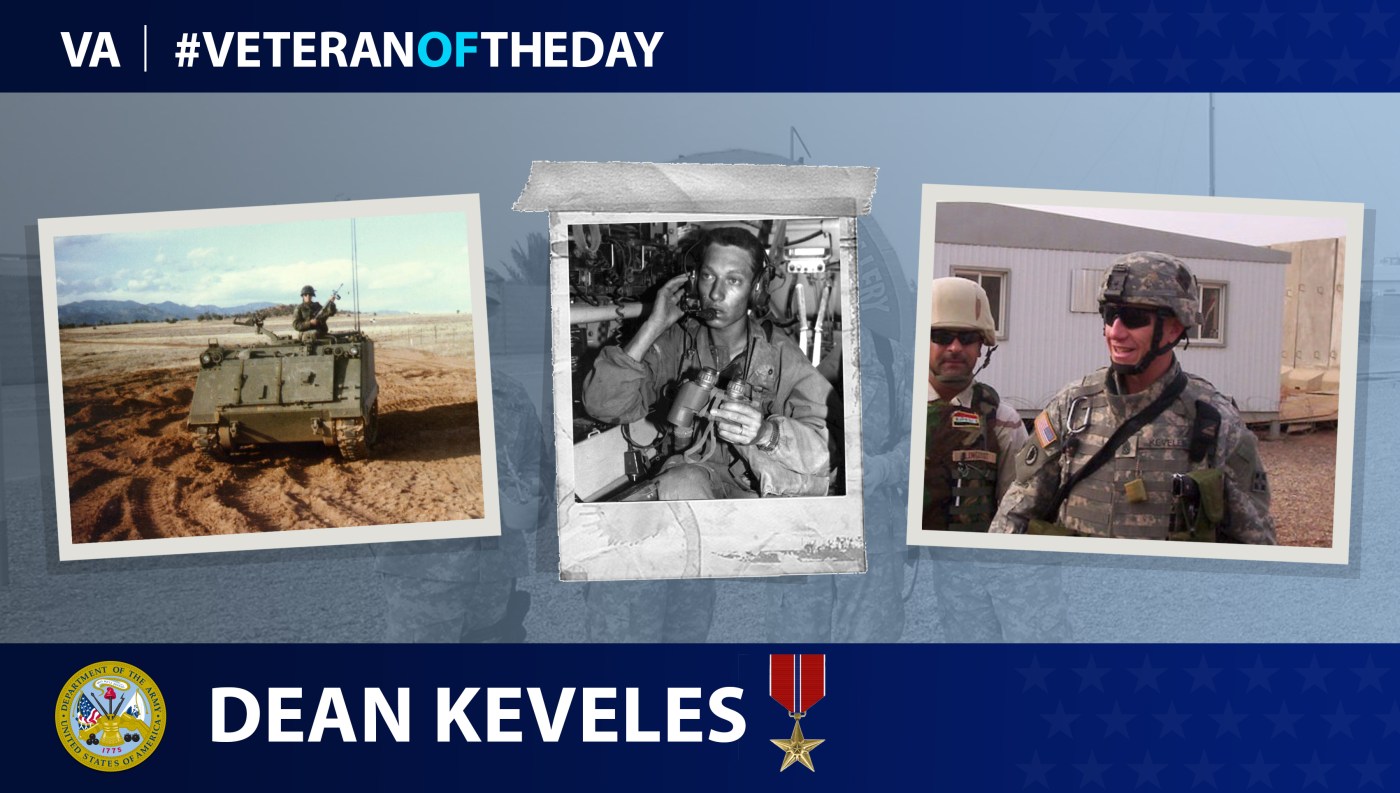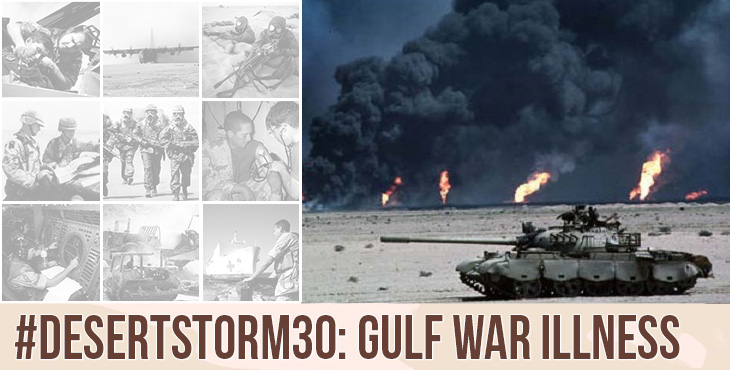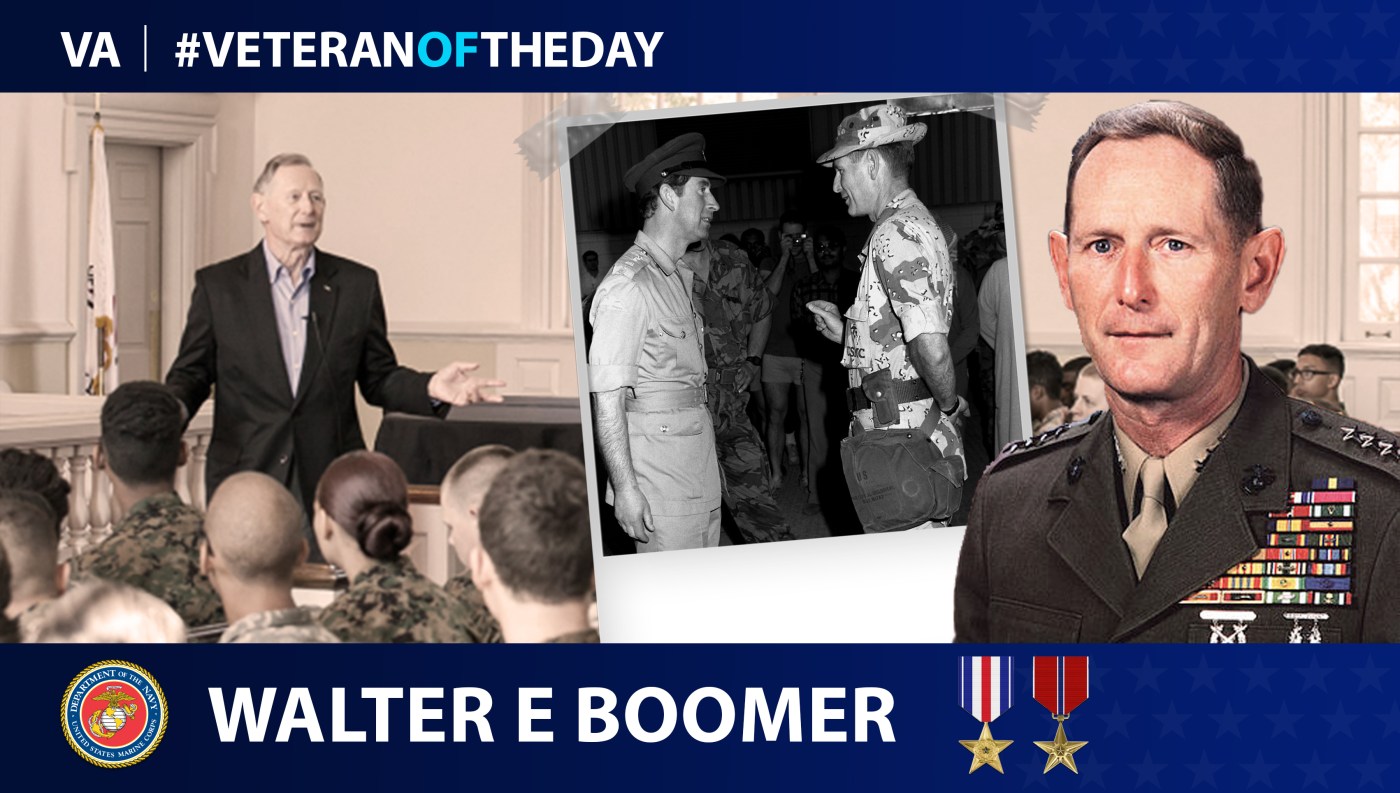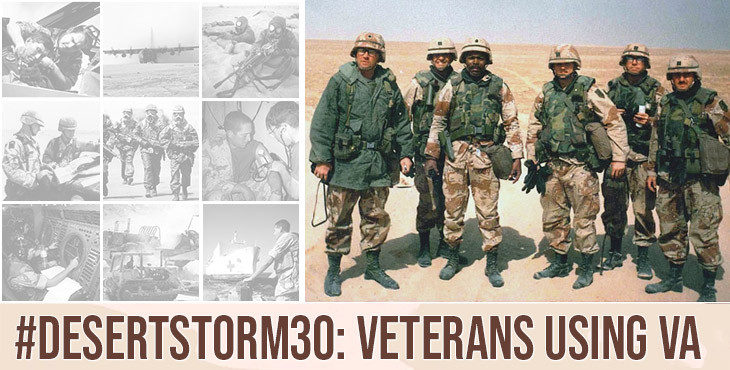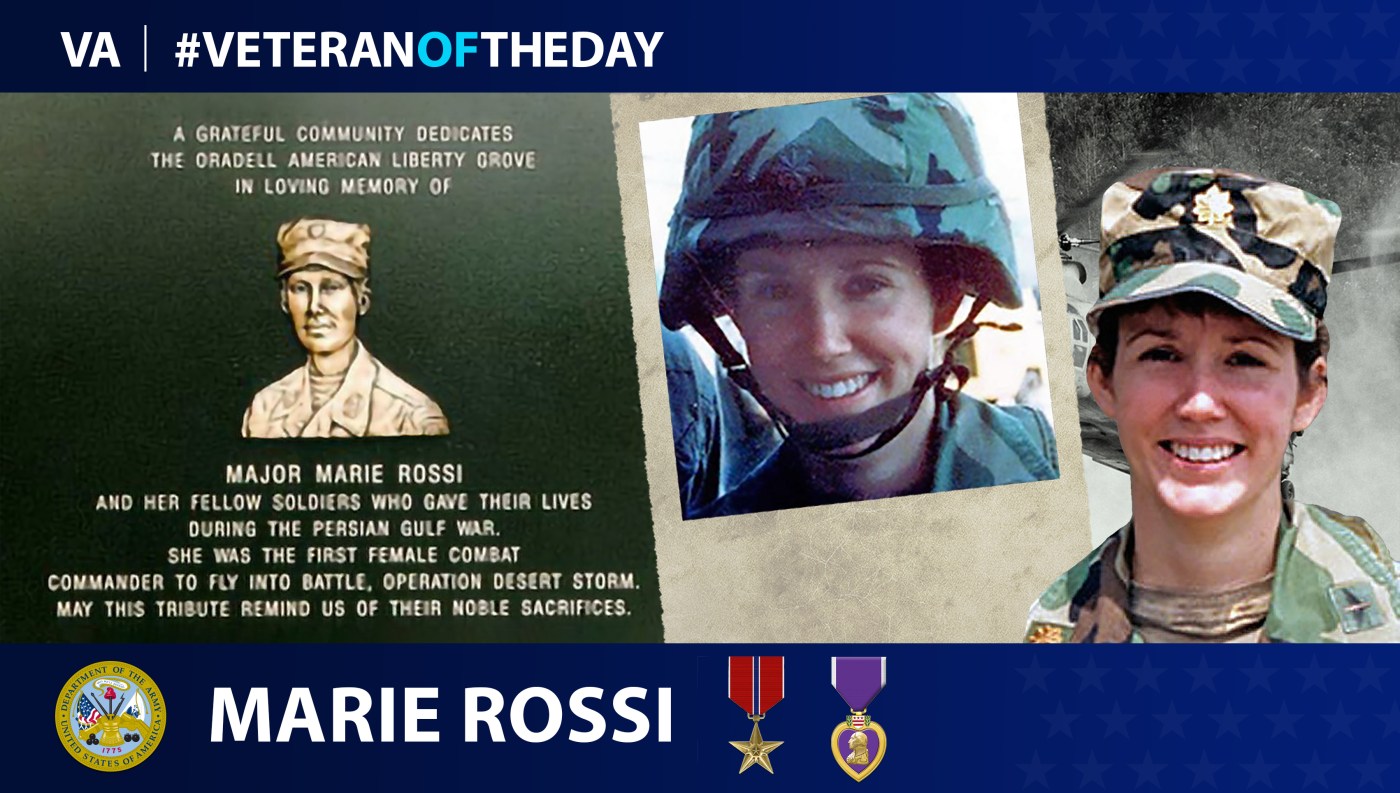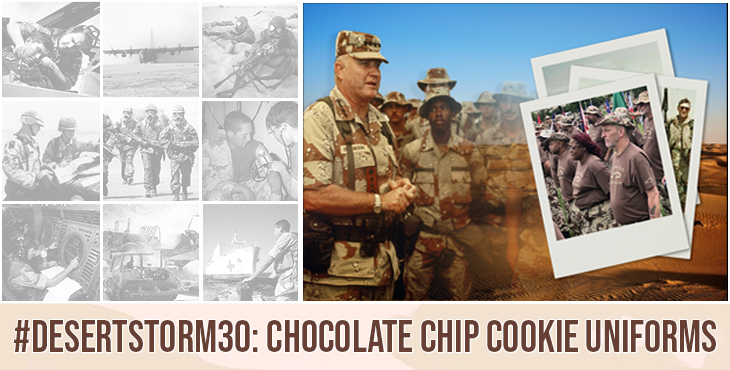On their second mission during Operation Desert Storm, the crew of an AC-130H gunship, call sign Ghost 02, flew a mission that none of them should have lived to tell. Flying into Iraqi airspace, the 14 men aboard destroyed a command and control center, then evaded three surface-to-air missiles through death-defying maneuvers in the lumbering, four-propeller aircraft. The crew’s actions followed their aircraft commander’s first and last rule: all 14 men come home alive.
In 1990 the newest aircraft in the Air Force’s fleet of KC-135 air refueling tankers was already 25 years old. The venerable airframe based on the Boeing 707 airliner and its crews were being asked to do something few of them had been trained to do – take part in a conventional war.
Desert Shield and Desert Storm Veterans who want to comment on their health concerns or ask about Gulf War Research can do so through the Research Advisory Committee on Gulf War Veterans’ Illnesses.
Today’s #VeteranOfTheDay is Navy Veteran Glen Ingram, who served as a logistics specialist during Operation Desert Storm.
Desert Storm was a short war, but Veterans from that era still have many different avenues and programs to connect with VA.
Today’s #VeteranOfTheDay is Army Veteran Dean J. Keveles, who served in Operations Desert Storm, Iraqi Freedom and Enduring Freedom.
Nearly 700,000 men and women served in the Persian Gulf during Operation Desert Shield and Operation Desert Storm in the early 1990s. Now, three decades later, as many as a third of that population are affected by a cluster of medically unexplained chronic symptoms that have plagued them following their return from deployment. The symptoms can include fatigue, headaches, joint pain, indigestion, bowel discomfort, insomnia, dizziness, respiratory disorders, skin problems, and memory impairment. VA clinicians and researchers often call this condition "Gulf War illness” in the medical literature.
Today’s #VeteranOfTheDay is Marine Corps Veteran Walter Boomer, who served as a commanding general during Operations Desert Shield and Desert Storm.
During Operations Desert Shield and Desert Storm, over 695,000 service members deployed, while 2.2 million were in service during the war. As of 2019, there were nearly 5 million living Veterans, of whom 2.7 million served exclusively during the Pre-9/11 time period. Here's how the access VA.
Today’s #VeteranOfTheDay is Army Veteran Marie Rossi, a helicopter pilot who served and died in a crash during Operation Desert Storm.
Though it was first designed in 1962, finalized in 1976, and then standardized in 1990, the Desert Battle Dress Uniform (DBDU)—affectionately known for its “chocolate chip” or “cookie dough” camouflage patterns—defined the U.S. military era known for a single event: Operation Desert Storm.
Today’s #VeteranOfTheDay is Army Veteran Bill Richards, who served with the 24th Infantry Division during the Gulf War as an infantryman.

